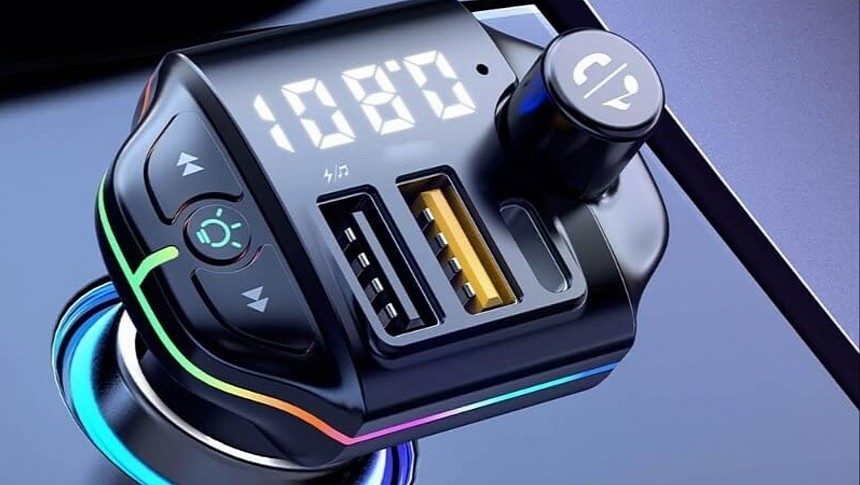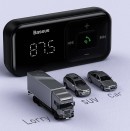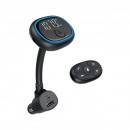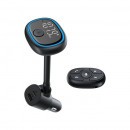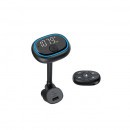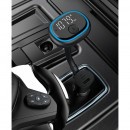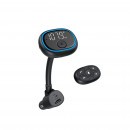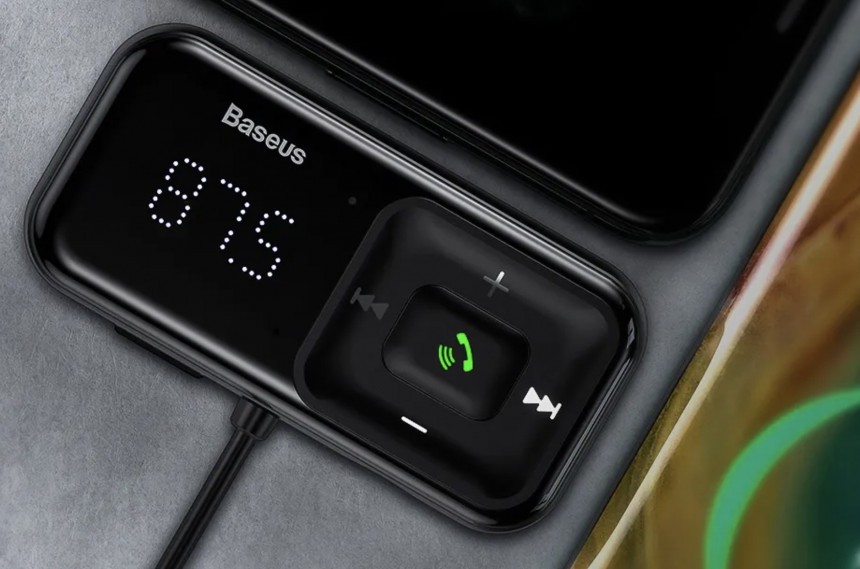Recent statistics show that not everybody uses Android Auto and CarPlay when driving, even if their cars come with such capabilities.
A significant share of drivers still listen to radio stations, as applications like Spotify, YouTube Music, Apple Music, and Tidal failed to convince everybody that paying a fee is worth it. Spotify comes with a free tier, giving users the choice of streaming content without paying a monthly subscription.
However, how do you use these apps or listen to your music library in a car without Bluetooth? Here are your options.
The first and easiest answer is to install Bluetooth in your car. It can be done in multiple ways, such as upgrading the infotainment system with a new model offering Bluetooth support. Additionally, you can also install a Bluetooth kit connected to the stereo system, eventually playing the music through the car's speakers.
The upgraded head unit is the best option, as it provides users with other big benefits, including support for Android Auto and CarPlay. The main drawback is that such upgrades are expensive and typically require professional installations, so the cost is too high to justify the benefits.
In the last few years, a product category with an affordable price, zero installation costs, and extra convenience has been gaining ground quite rapidly.
Wireless FM transmitters emerged nearly 20 years ago, but the category has been mostly dormant after Android Auto and CarPlay became more widely adopted. However, FM transmitters are still around these days, allowing users to listen to their tunes without spending a small fortune on the upgrade.
If you're not familiar with the concept, let me explain what an FM transmitter does. The device receives the audio signal from your smartphone and forwards it to the head unit in the car using either Bluetooth or a wired connection.
Like non-car FM transmitters, the device uses radio frequency to do its job. It's a small device that gets its power from the cigarette lighter port in your vehicle and transmits the audio signal it receives from the smartphone on a specific frequency.
New-generation models typically connect to the mobile device via Bluetooth, so you can stream the content wirelessly. Once the connection is complete, you can stream whatever you want to the FM transmitter, including content from Spotify, YouTube Music, or other services. You can also stream music stored locally, so you can still listen to your favorite tunes even if you don't have an Internet connection in the car.
The FM transmitter doesn't care about the audio as long as it's sent via an established Bluetooth connection.
The device starts broadcasting on a user-defined frequency, and users must configure the car's radio system to connect to the same frequency. If everything works correctly, they should then hear the music they play on their phone "on the radio."
The audio quality isn't the best, and the connection stability depends on a series of factors, starting with the chosen frequency. You must always choose an available frequency and avoid those used by radio stations. Otherwise, you could end up losing the signal, especially in areas without big buildings around you. Radio stations have much more powerful FM transmitters that could create interference for your little toy.
The audio quality also depends on the device itself, though no matter how premium it is, it'll never match the quality of a direct Bluetooth connection or a wired connection between the phone and the head unit. FM broadcasting comes with limitations, but if you don't mind listening to a podcast in the background while driving, an FM transmitter is the right solution.
Most people choose FM transmitters because they are easy to use and don't require professional installation. It's enough to plug the device into the cigarette lighter socket and start broadcasting on the configured frequency.
Additionally, FM transmitters are very cheap, with models from generic Chinese brands available for just a couple of bucks. However, they don't always work as expected, sometimes lose connection, and offer horrible audio quality.
More premium models typically sell for $20 or $30, so they remain affordable compared to an aftermarket head unit upgrade. The price could get significantly higher if you're interested in more advanced options, such as voice command integration.
A low-end infotainment upgrade with a basic head unit that supports wired Android Auto and CarPlay usually starts at $200, but if you're not a tech-savvy person, you might have to pay around $100 to install it in your car. Depending on your model, you might have to choose a floating design to fit the dashboard, with the price typically going up by $100.
However, how do you use these apps or listen to your music library in a car without Bluetooth? Here are your options.
The first and easiest answer is to install Bluetooth in your car. It can be done in multiple ways, such as upgrading the infotainment system with a new model offering Bluetooth support. Additionally, you can also install a Bluetooth kit connected to the stereo system, eventually playing the music through the car's speakers.
The upgraded head unit is the best option, as it provides users with other big benefits, including support for Android Auto and CarPlay. The main drawback is that such upgrades are expensive and typically require professional installations, so the cost is too high to justify the benefits.
In the last few years, a product category with an affordable price, zero installation costs, and extra convenience has been gaining ground quite rapidly.
Wireless FM transmitters emerged nearly 20 years ago, but the category has been mostly dormant after Android Auto and CarPlay became more widely adopted. However, FM transmitters are still around these days, allowing users to listen to their tunes without spending a small fortune on the upgrade.
What's an FM transmitter?
Like non-car FM transmitters, the device uses radio frequency to do its job. It's a small device that gets its power from the cigarette lighter port in your vehicle and transmits the audio signal it receives from the smartphone on a specific frequency.
How does an FM transmitter work?
The device works by connecting your mobile device wired or wirelessly to receive audio signal. It can be anything, from music and podcasts, to shows and video audio.New-generation models typically connect to the mobile device via Bluetooth, so you can stream the content wirelessly. Once the connection is complete, you can stream whatever you want to the FM transmitter, including content from Spotify, YouTube Music, or other services. You can also stream music stored locally, so you can still listen to your favorite tunes even if you don't have an Internet connection in the car.
The FM transmitter doesn't care about the audio as long as it's sent via an established Bluetooth connection.
The audio quality isn't the best, and the connection stability depends on a series of factors, starting with the chosen frequency. You must always choose an available frequency and avoid those used by radio stations. Otherwise, you could end up losing the signal, especially in areas without big buildings around you. Radio stations have much more powerful FM transmitters that could create interference for your little toy.
The audio quality also depends on the device itself, though no matter how premium it is, it'll never match the quality of a direct Bluetooth connection or a wired connection between the phone and the head unit. FM broadcasting comes with limitations, but if you don't mind listening to a podcast in the background while driving, an FM transmitter is the right solution.
How much does an FM transmitter cost?
Additionally, FM transmitters are very cheap, with models from generic Chinese brands available for just a couple of bucks. However, they don't always work as expected, sometimes lose connection, and offer horrible audio quality.
More premium models typically sell for $20 or $30, so they remain affordable compared to an aftermarket head unit upgrade. The price could get significantly higher if you're interested in more advanced options, such as voice command integration.
A low-end infotainment upgrade with a basic head unit that supports wired Android Auto and CarPlay usually starts at $200, but if you're not a tech-savvy person, you might have to pay around $100 to install it in your car. Depending on your model, you might have to choose a floating design to fit the dashboard, with the price typically going up by $100.
